
views
Choosing the Right Checking Account

Determine your account-related values. Checking accounts come in a wide variety of shapes and sizes, from your average spending account to high-interest investments for frequent depositors. You'll need to consider the following criteria before searching for a branch to suit your needs: Whether or not you're a student. Most large banks offer a lenient account with reduced or non-existent fees for students; some banks, such as Chase, will even extend the account's usage to cover an additional year after your student status expires. Whether or not you want to accrue interest. Most banks that offer interest on their checking accounts only do so for large account balances (e.g., $2,500 or more). Since depositing and holding large amounts of money in your checking is a risky endeavor, consider opening a savings account in tandem with your checking; most banks offer this option, and most savings accounts have a standard interest rate by default. Whether or not you're comfortable with an online-only bank. Brick-and-mortar bank branches are often convenient; however, online banking services will usually apply fewer fees and offer higher interest rates on your accounts. Whether or not your job offers direct deposit. While a fair amount of larger banks charge a monthly fee for simply having a checking account, you can usually waive this fee by having your checks deposited directly into your checking account.

Search for banks with few or no fees. Though you'll likely want to stick with whatever branch is local and convenient, most large banks charge monthly fees, ATM fees, and more in order to cover their own expenses. Ideally, your selected branch will charge little or no money for the following services: ATM withdrawal - If you choose to open an account with an obscure or non-local bank (for example, Wells Fargo has no branches or ATMs in Missouri), you'll have to pay a few dollars for every ATM withdrawal with that bank's card; similarly, using a specific bank's card with a different bank's ATM will often incur a fee. Some banks, such as Compass Bank, will reimburse your ATM fees on a monthly (or even daily) basis. Minimum balance maintenance - Many larger banks will charge a small monthly fee if your checking account has less than a certain amount in it (for example, Chase charge $10/month for a basic checking account with a balance less than $1,500). If you don't intend to keep enough money in your checking account to avoid the fee, look for a bank with no maintenance fees. Many student accounts fit this criterion. Overdraft - If you overdraw your checking account, most banks will charge an additional fee on top of the difference; the average overdraft fee is around $34. While you probably won't be able to find a bank with no overdraft policy, look for one that offers a grace period or a reduced fee, such as Huntington. Maximum number of transactions - Some banks will charge a fee to your checking account after a certain amount of transactions in a month. Since you're likely setting up a checking account for the purpose of spending money, this is a fee you'll want to avoid.

Narrow down your bank options. After you eliminate any banks with high fees or unwanted attributes, consider your remaining options. In order to determine the best candidate, you'll need to complete the following actions: Research your banks' press - Typing the name of one of your bank options into a search engine should bring up customer reviews and pertinent news articles. If one of the banks you're considering has a fair amount of poor press, you might want to cross it off of your list. Read the fine print - You'll want to visit your banks' online sites or physical locations and inquire about opening a checking account. Generally-speaking, you should be able to unearth any hidden fees or paid services you don't want. Look for any work-based incentives - If your job offers free access to a checking account or increased interest at a particular bank, you should absolutely consider taking advantage of this feature. Look for mobile support - Being able to access your accounts on-the-go is extremely important in the event of an emergency; for this reason, you should avoid banks that don't have mobile app support.
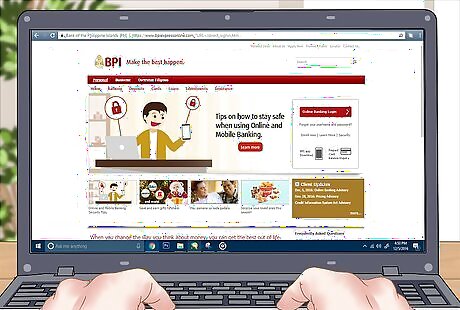
Visit the bank's website or branch location. Once you've decided on a bank that fits your specific criteria, it's time to set up your checking account!
Opening a Wells Fargo Account

Make sure you meet the minimum requirements. To sign up for a checking account with Wells Fargo, you must have the following available: Your Social Security number A valid form of ID (e.g., a driver's license) 25 dollars for your opening deposit (must come from an existing Wells Fargo account or a check)
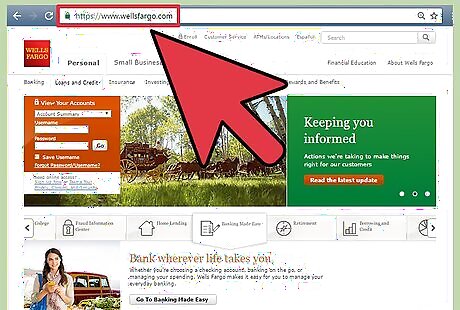
Navigate to Wells Fargo's website. Wells Fargo offers a clean, accessible checking model that you'll be able to use almost anywhere in the United States.
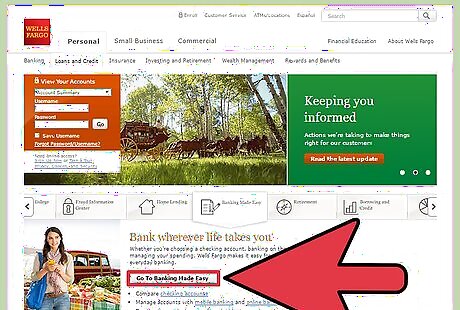
Select the "Banking Made Easy" option. This should already be selected, but, if it isn't, you can do so from the grey toolbar in the middle of the main page.
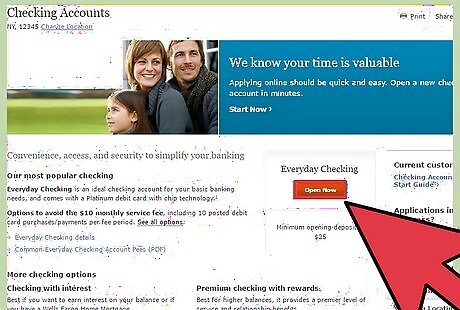
Click the "Get Started" option. This is under the "Everyday Checking" heading on the right side of your screen; clicking it will take you to the "Checking Account" page.
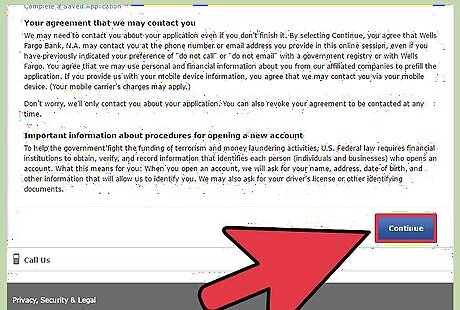
Click the "Start Now" button. You may need to scroll down to find this at the bottom of the Checking Account page.
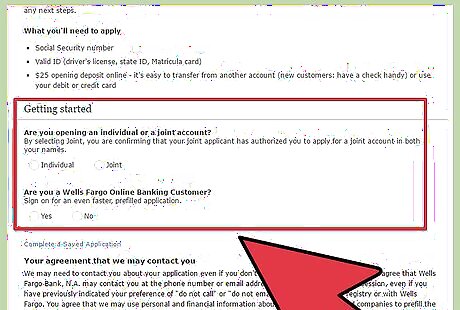
Fill out the "Getting Started" section. You'll need to enter the following information on the bottom half of this webpage: Your ZIP code Whether you're opening an individual or a joint account (check "Individual" or "Joint" here) Whether or not you're a preexisting online banking member
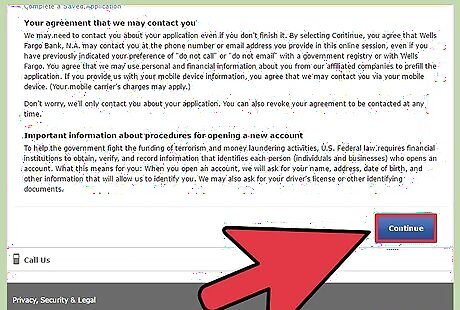
Click "Continue at the bottom of the page. This will save the information you've entered so far.
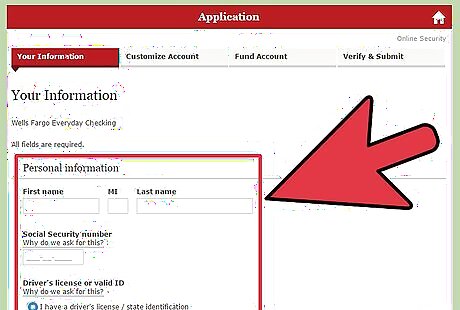
Fill out your personal information. This includes: Your full name Your Social Security number Your ID (the default is a driver's license; click "I have an alternate form of identification" to use a different type of ID) Your date of birth Your citizenship
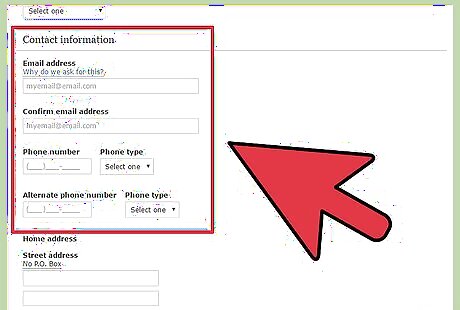
Enter your contact information. The fields you'll need to fill out include: An active email address (you'll enter this twice for verification purposes) A primary and a secondary phone number Your home address The length of time for which you've lived at your current address
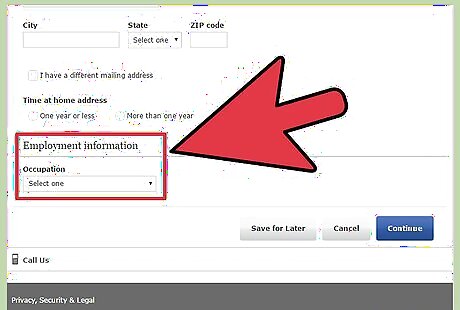
Enter your employment information. You'll need to click the drop-down menu here to select an employment category; depending on your answer, you may enter your employer's name and your job position. The employment categories include: Executive, Professional, Semi-Professional Manager, Owner, Office Prod, Sales, Trade, Service, Labor Military Teacher Diplomat/Government Official Retired Homemaker Student Unemployed w/income Unemployed-no income
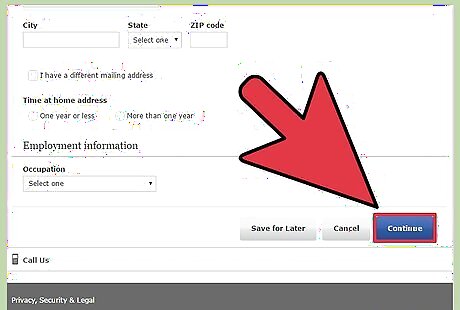
Click "Continue" to save this information. From here, you'll need to set up your account preferences and transfer your $25 into your new checking account. Once you've done that, your checking account will be complete!
Opening a Bank of America Account
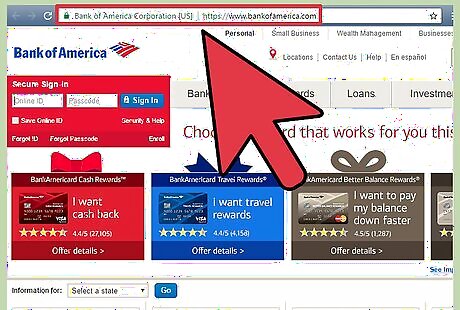
Navigate to the Bank of America website. Bank of America boasts a couple of different checking options depending on your income status.
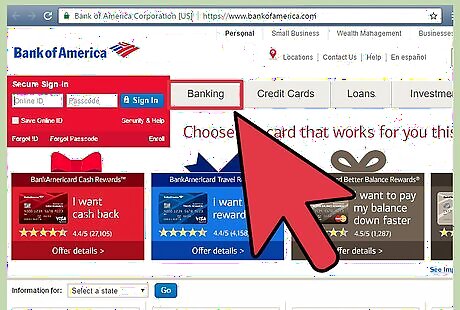
Select "Banking" at the top of your page. This should be to the right of the "Secure Sign-In" box.
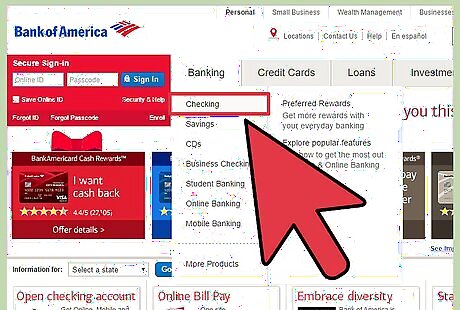
Click "Checking". You'll find this at the top of the drop-down menu.
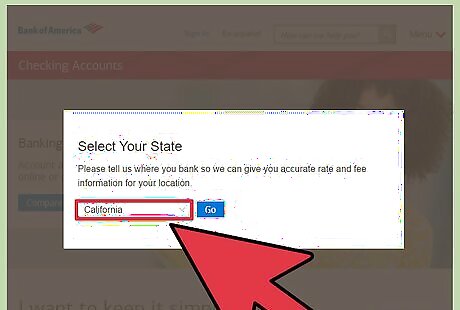
Select your state. Since Bank of America fees are contingent on your location, you'll need to click the "Select State" menu and click your pertinent state. Click "Go" when you're done.
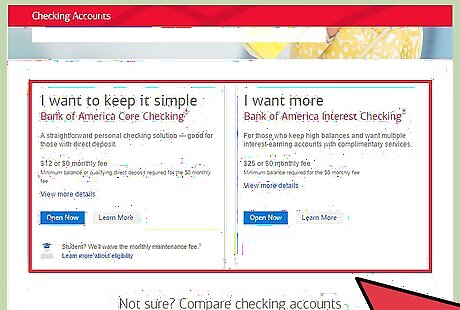
Decide on a checking account option. Bank of America offers two checking options: "Core Checking" - The basic checking account with a mandatory 25 dollar deposit and a 12 dollar/month fee. "Interest Checking" - An interest-based high-balance account with a mandatory 100 dollar deposit and a 25 dollar/month fee.
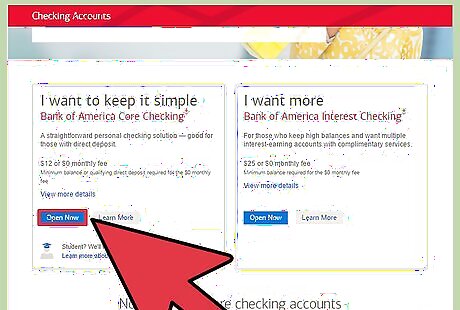
Click "Open Now" on your preferred checking option. Doing so will begin your application process.
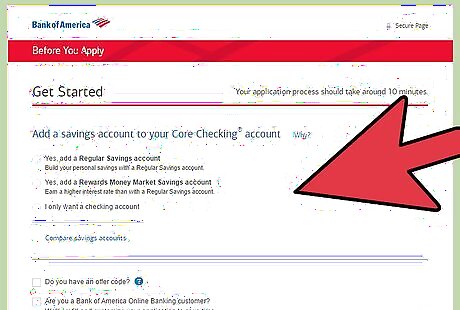
Fill out your "Get Started" page. You only need to provide a few answers here: Whether or not you would like to add a savings account to your checking account Whether or not you have an offer code Whether or not you are a current Bank of America customer
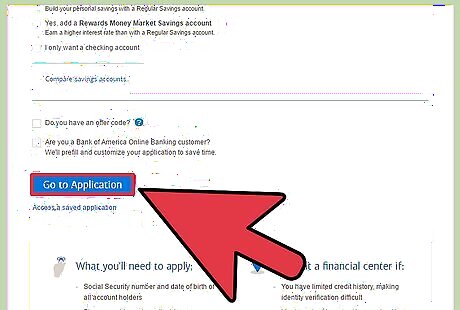
Click "Go to Application". This is at the bottom of the page; it will redirect you to the account creation page.
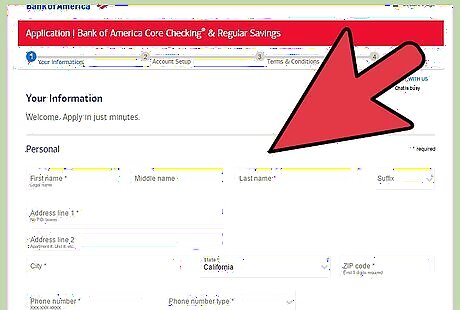
Enter your personal information. This will include the following items: Your full name and suffix Your address Your phone number Your email address (you'll enter this twice for verification) Your country of citizenship Your country of residence Your date of birth
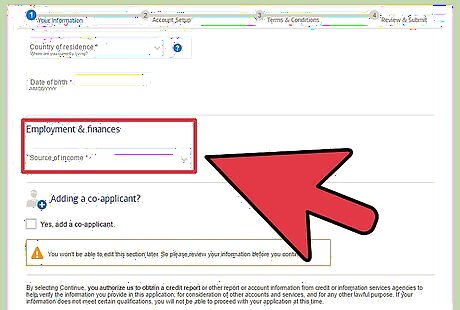
Enter your employment information. You'll need to click the drop-down menu below the "Employment Information" heading and select an income location; depending on your answer here, you may need to add employer information as well. Your employment options are as follows: Employment Income Inheritance or Trust Investment Income Retirement Income Social Security Unemployment Household Income

Click "Continue" to save this information. From here, you'll need to set up your account preferences (e.g., direct deposit), add your startup fee, and confirm your account creation. Once you do so, you will have successfully set up a Bank of America checking account!
Opening a US Bank Account

Make sure you have the necessary information available. This includes your driver's license, a deposit figure pertinent to your chosen account type, and your Social Security number.
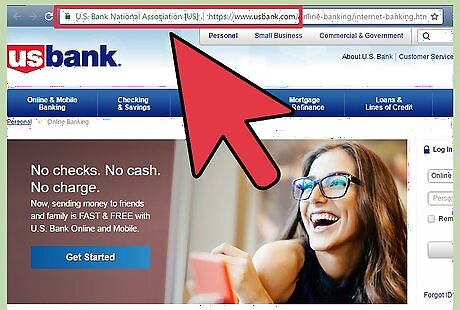
Navigate to US Bank's website. Click the link provided to do so.
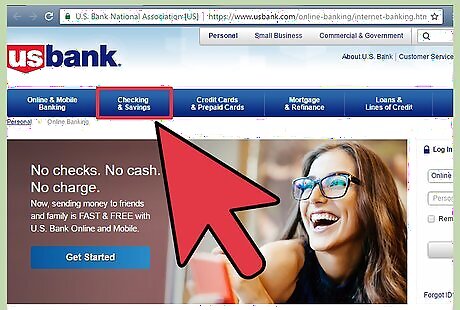
Select the "Checking and Savings" tab. This is at the top of your screen; selecting it will prompt a drop-down menu.
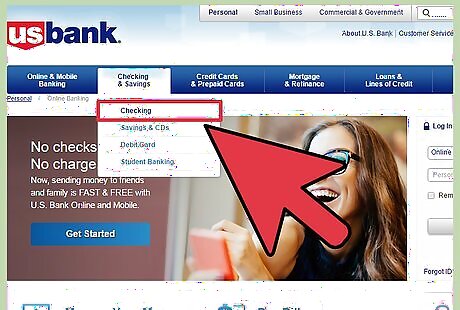
Click the "Checking" option. This should be at the top of the Checking and Savings drop-down menu.
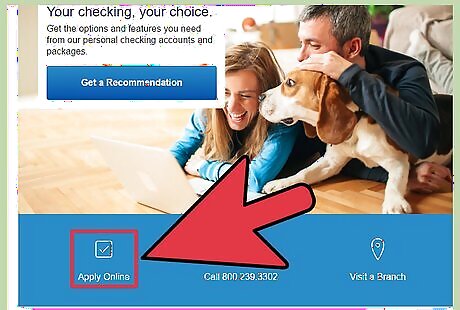
Click "Apply Online". You'll find this option beneath the "Checking Accounts" section of the page.
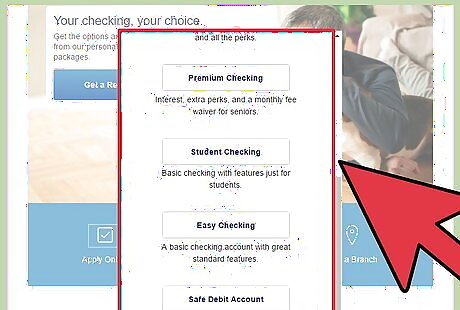
Select a checking account option. US Bank offers a myriad of checking account packages, including the following: Silver Checking - Combined checking and savings. Gold Checking - Comes with benefits for credit card users. Platinum Checking - For high-income customers with great credit scores. Premium Checking - No monthly fee for seniors; has an interest rate. Student Checking - Basic checking account for students. Easy Checking - Basic checking account for across-the-board users.
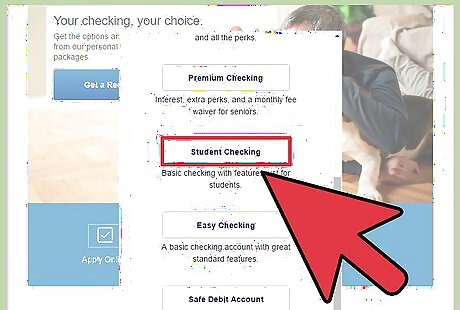
Click your preferred checking account option. Doing so will redirect you to an application for that account.
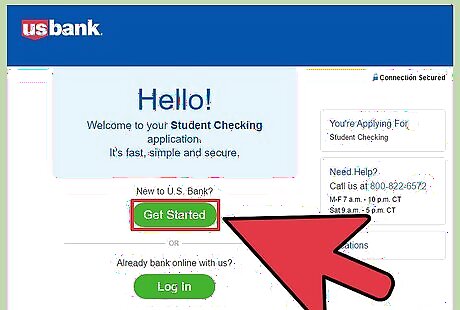
Click the "Continue" button at the bottom of the page. If you're setting up a Premium, Student, or Easy Checking account, you'll click "Get Started". If you have a preexisting US Bank account or a promo code, make sure you fill out these fields before clicking "Continue". For a Premium/Student/Easy Checking account, you'll need to click "Joint" or "Individual" to select the status of your account on the following page.
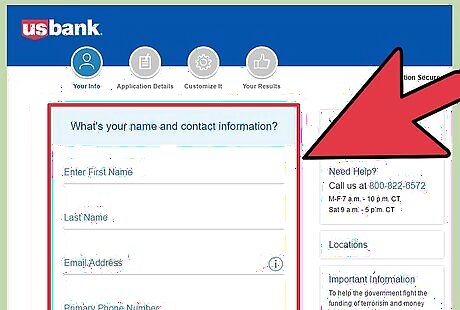
Fill out your account information. Depending on your chosen account type, you will need to enter some or all of the following information: Full name and suffix Primary address Whether or not the US is your country of permanent residence/citizenship The length of time for which you've lived at your current address Primary and secondary phone numbers An active email address Your current housing status and the amount you pay per month for housing Your annual income Your employment status ("Employed", "Unemployed", "Student", or "Retired") Your date of birth Your Social Security number Whether or not you're a citizen of the United States A driver's license/military ID/state ID (pick the most convenient one) Whether or not you are a current or former political figure (or family thereof) Whether you would like to open an individual account or a joint (shared) account
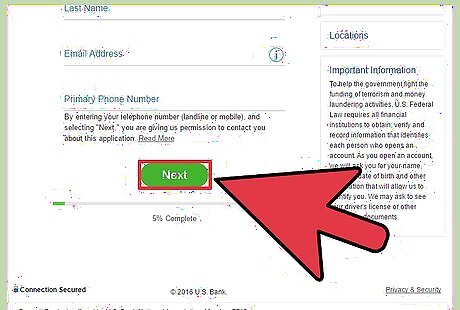
Click "Continue" when you're done. This will save your progress on your application; from here, you'll need to review and submit your application, add your startup deposit to your account, and select account features such as your preferred credit settings. Once you've completed these steps, your US Bank account will be active!




















Comments
0 comment